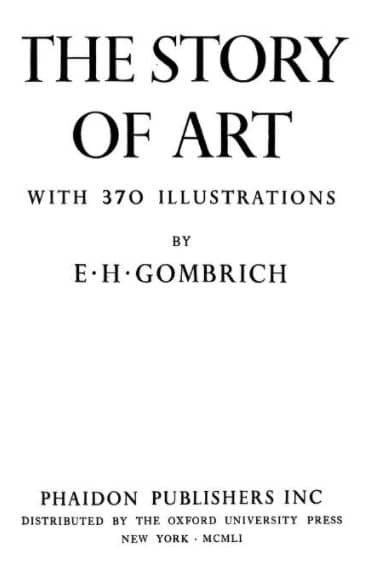‘Gombrich The Story Of Art’ PDF Quick download link is given at the bottom of this article. You can see the PDF demo, size of the PDF, page numbers, and direct download Free PDF of ‘The Story Of Art’ using the download button.
The Story Of Art Gombrich PDF Free Download

The Story Of Art
WE do not know how art began any more than we know how language started.
If we take art to mean such activities as building temples and houses, taking pictures and sculptures, or weaving patterns, there are no people in all the world without art.
If on the other hand, we mean by art some kind of beautiful luxury, something to enjoy in museums and exhibitions or something special to use as a precious decoration in the best parlor.
we must realize that this use of the word is a very recent development and that many of the greatest builders, painters or sculptors of the past never dreamed of it.
We can best understand this difference if we think of architecture. We all know that there are beautiful buildings and that some of them are true works of art.
But there is scarcely any building in the world that was not erected for a particular purpose.
Those who use these buildings as places of worship or entertainment, or as dwellings, judge them first and foremost by standards of utility.
But apart from this, they may like or dislike the design or the proportion of the structure, and appreciate the efforts of the good architect to make it not only practical but “right”.
In the past, the attitude to paintings and statues was often similar. They were not thought of as mere works of art but as objects which had a definite function.
He would be a poor judge of houses who did not know the requirements for which they were built. Similarly, we are not likely to understand the art of the past if we are quite ignorant of the aims it had to serve.
The further we go back in history, the more definite but also the more strange are the aims which art was supposed to serve. The same applies if we leave towns and cities and go to the peasants or, better still.
f we leave our civilized countries and travel to the peoples whose ways of life still resemble the conditions in which our remote ancestors lived.
We call these people ‘primitives’ not because they are simpler than we are their processes of thought are often more complicated than ours-but because they are closer to the state from which all mankind once.
I have referred back for the purpose of comparison to works that show the distance which artists had placed between themselves and their forerunners. There is one pitfall in this method of presentation which I hope to have avoided but which should not go unmentioned.
It is the naive misinterpretation of the constant change in art as a continuous progress. It is true that every ardst feels that he has surpassed the generation before him and that from his point of view he has made progress beyond anything that was known before.
We cannot hope to understand a work of art without being able to share this sense of liberation and triumph which the artist felt when he looked at his own achievement.
But we must realize that each gain or progress in one direction entails a loss in another, and that this subjective progress, in spite of its importance, does not correspond to an objective increase in artistic values. All this may sound a little puzzling when stated in the abstract. I hope the book will make it clear.
One more word about the space allotted to the various arts in this book. To some it will seem that painting is imduly favoured as compared to sculpture and architecture.
One reason for this bias is that less is lost in the illustration of a painting than in that of a round sculpture, let alone a monumental building.
I had no intention, moreover, of competing with the many excellent histories of architectural styles which exist. On the other hand, the story of art as here conceived could not be told without a reference to the architectural background.
While I had to confine myself to discussing the style of only one or two buildings in each period, I tried to restore the balance in favour of architecture by giving these examples pride of place in each chapter.
This may help the reader to co-ordinate his knowledge of each period and see it as a whole.
As a tailpiece to each chapter I have chosen a characteristic representation of the artist’s life and world from the period concerned. Together with the frontispiece of this book these pictures form an independent little series illustrating the changing social position of the artist and his public.
Even where their artistic merit is not very high these pictorial documents may help us to build up, in our minds, a concrete picture of the surroundings in which the art of the past sprang to life.
| Author | E.H.Gombrich |
| Language | English |
| Pages | 472 |
| PDF Size | 48.5 MB |
| Category | Story |
Related PDFs
Rangoli Designs With Dots P`DF
The Story Of Art Book PDF Free Download
